There’s something special about solo travel: the freedom to explore entirely on our own terms offers liberation and self-discovery. Only when I travel solo do I feel I have the space to truly connect with a place.
But traveling solo can sometimes get lonely and overwhelming if you don’t pick the right place. I’ve traveled solo to many far-flung places like Ghana, Saudi Arabia and Kazakhstan, and I’ve come to learn that not every place is made for solo travelers.
Mexico, in my experience, is fantastic for those who explore solo, thanks to its warm, fully embracing culture. If you open your heart, you’ll find that Mexicans are incredibly welcoming and that most are happy to share their love for the country with you.
I’ve wandered small villages, strolled countless cobblestoned streets, observed local life in quiet plazas, and hiked many trails — all by myself — but never once did I feel lonely thanks to Mexicans’ openheartedness.
For those who also love traveling solo, I bring you another installment of Where to Travel in Mexico 2025, a series that spotlights the best locations across Mexico for specific travel styles, whether you’re a family traveler, road tripper or beach lover.
As a writer who’s traveled on assignment (solo) to various parts of Mexico, I’ve picked out six prime locations in Mexico for those who like to explore on their own terms.
Mérida: For cultural connoisseurs and foodies

Travelers who prize safety, history and culture will love Mérida, the capital of Yucatán state. Often cited as one of the safest cities in Mexico, Mérida gives first-time travelers the peace of mind to wander with confidence. For a solo traveler, this freedom is invaluable.
At just a 3.5-hour drive from Cancún, Mérida is easy to get to (now more than ever thanks to the Maya Train), and yet, with its quaint historic center, colonial architecture and cobblestone streets, it offers a stark contrast to Cancún’s party vibes.
Nicknamed “The White City” for the pale limestone of its colonial buildings, Mérida is a living museum. Its elegant core, with pastel-hued mansions lining the grand Paseo de Montejo, is fantastic to explore on foot.
But the city’s appeal goes beyond the surface. Mérida is a launchpad into the heart of the Maya world, with a healthy Indigenous population, ancient ruins nearby and a unique cuisine that traces its roots back to the pre-Hispanic era.
Be sure to try Yucatecan specialities like cochinita pibil — a slow-cooked pork stewed with achiote and bitter orange — at the Netflix-featured Manjar Blanco restaurant, and regional staples like panuchos and salbutes (both featuring masa madre) at Taquería La Lupita in Mercado Santiago. If you’re looking to try more contemporary Mexican cuisine, book a table at Micaela Mar & Leña, named the country’s best restaurant by the Mexico Gastronomic Guide 2024.
The city’s rich cultural calendar means there’s always a free concert, traditional dance performance or video-mapping show in one of the central plazas, offering easy, low-key ways to feel part of the city’s community. Sundays are the best time to mingle, as the streets of the historic center are closed off to traffic for locals and visitors to cycle, stroll or simply snack at the street market.
San Pancho: For the wellness wanderer
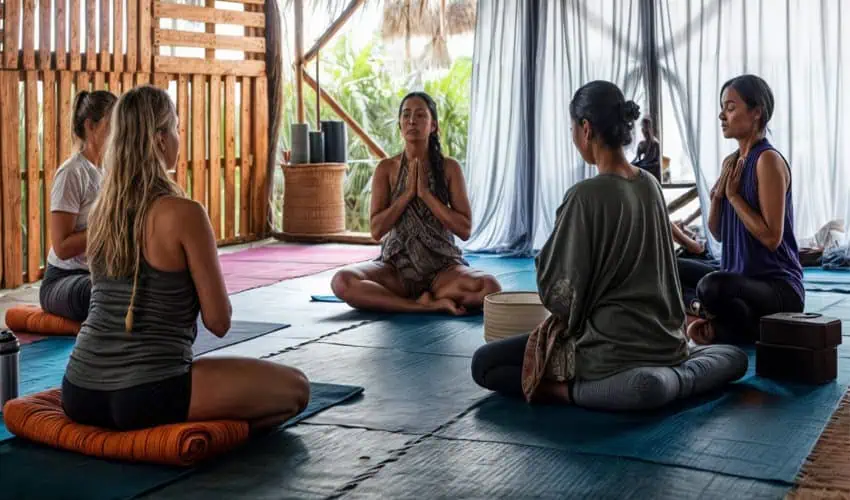
If you are all about holistic living and wellness travel, the best place in Mexico for you is the laid-back beach town of San Francisco, affectionately known as San Pancho. Located on the Riviera Nayarit, San Pancho has cultivated a reputation as a hub for yoga, mindfulness and community-minded living.
Compared to neighboring Sayulita just 5 kilometers south, San Pancho has a decidedly unfussy, soul-stirring charm and mellow vibes. It attracts a wonderfully eclectic mix of people – surfers, yogis, ecoconscious travelers, and those simply looking to disconnect.
It’s easy to fall into conversation at a beachside palapa, join a drop-in yoga class (at El Estar), or take a beginner surf lesson on the gentle waves (with Mitclán Surf School). Your days will revolve around yoga classes, long walks on the expansive beach, enjoying healthy food from organic cafés and watching spectacular sunsets.
The town’s small size is its biggest asset. After a day or two, you’ll start recognizing faces. Becoming a regular at a local coffee shop or juice bar is a great way to feel connected to the local community. Volunteering at the nonprofit community center, Entreamigos will also help build more bonds and give back at the same time.
Oaxaca: For social butterflies
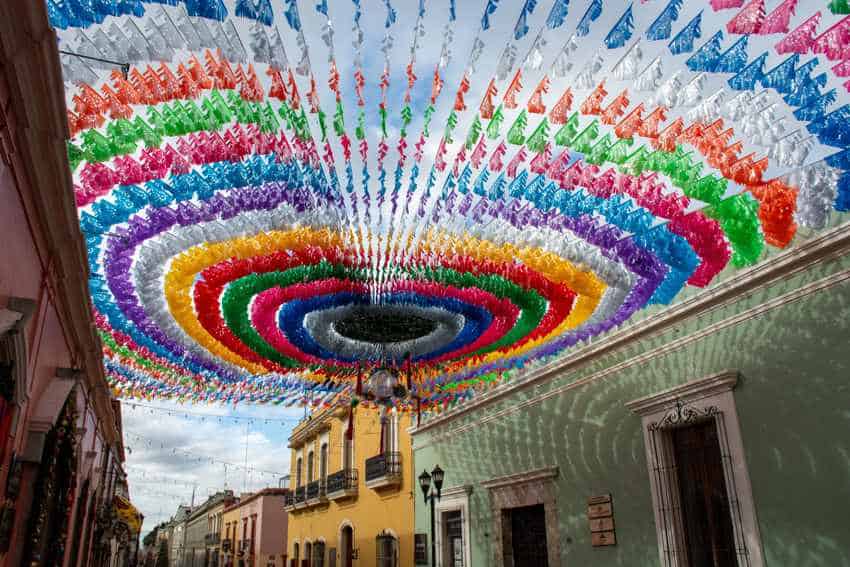
Oaxaca is the place to go if your idea of a perfect solo trip involves meeting fellow travelers, sampling world-class food and immersing deeply in Mexican culture. The culture hub is a magnet for digital nomads, backpackers and long-term expats, creating a dynamic social fabric that’s incredibly easy to weave yourself into. It pulses with Indigenous culture, vibrant markets, world-renowned cuisine and a deeply artistic spirit.
The city’s walkable historic center is brimming with colorful streets, bustling markets like Mercado 20 de Noviembre, and rooftop bars perfect for striking up conversations over mezcal cocktails. The abundance of excellent hostels (like the socially-oriented hostel, Grana B&B, which organizes communal dinners) and coworking spaces in Oaxaca (try Convivio Oaxaca) also makes it simple to find your tribe.
Oaxaca’s many workshops — from mezcal tasting to traditional weaving — are also fantastic for meeting like-minded people in a relaxed, natural setting. Joining a mole cooking class with La Cocina Oaxaqueña or a food tour with Oaxaca Eats , foodies are in for a ride here. Oaxaca’s food scene, from street stalls to fine dining, is so rich that every meal feels like an adventure.
If you have time, make your way to Oaxaca’s coastline for a more laid-back, sun-drenched experience. Go surfing and join baby turtle releases in Puerto Escondido, visit the turtle center in next-door Mazunte, or kick back on the nudist beach in bohemian Zipolite.
Copper Canyon: For the intrepid adventurer
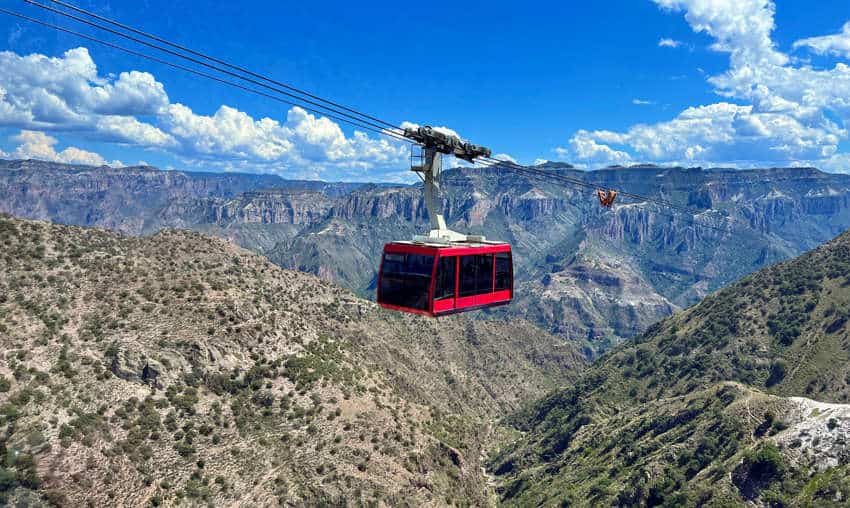
Barrancas del Cobre, or Copper Canyon, is Mexico’s ultimate adventure playground for solo travelers who thrive on epic landscapes and outdoor activities. Deeper and vaster than the Grand Canyon, this network of six interconnected canyons in the Sierra Tarahumara mountains of Chihuahua state offers a raw, rugged experience far from the tourist trail.
From my own experience, remote places aren’t typically great for solo travelers — but the Copper Canyon is. The legendary El Chepe train makes it easy to navigate the area by connecting rural towns and villages, revealing spectacular mountainscapes along the way. This is a trip that requires a spirit of self-reliance, but those looking for adventure will find it here.
The highlight of any Chepe train journey is the Divisadero station, where a spectacular viewpoint and the iconic Hotel Divisadero Barrancas, stand right across the train tracks. At the nearby Parque de Aventura Barrancas del Cobre, you can brave the ZipRider (one of the world’s longest ziplines) or ride the cable car across the canyon.
I’ve traveled the region twice solo and have had the best experiences: from going on a sunrise hike with local Rarámuri guides to visiting artisan markets and tasting locally produced wines all in one day. The camaraderie on the El Chepe train is a unique part of the experience. Don’t be shy to share stories and tips with fellow passengers (you’ll find mostly Mexicans on the train journey) — they are your best resource in this remote region.
San Miguel de Allende: For artsy retirees
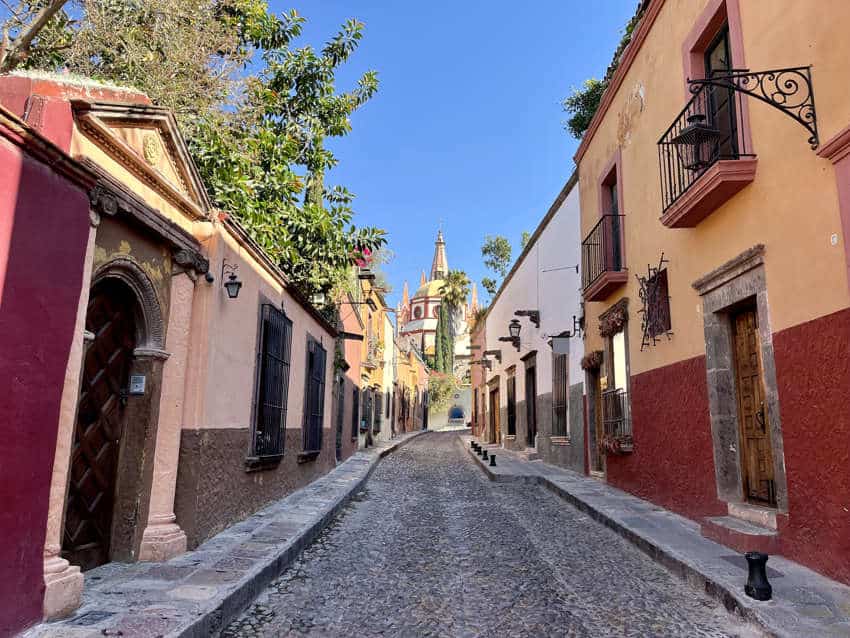
There’s a reason San Miguel de Allende consistently charms visitors from around the globe – it was even voted world’s best city by Travel + Leisure readers in 2024. For solo travelers, its appeal is particularly strong. This UNESCO World Heritage city, with its stunning colonial architecture and iconic pink Parroquia church, is welcoming and easy to navigate on your own. The historic center is compact and walkable, with sheer beauty at every turn.
San Miguel de Allende has an artistic flair and creative edge that appeal to those in search of an unconventional life. Many Americans and Canadians retire here, drawn by the slow pace of life, the flurry of cultural events and the large, friendly expat community.
It’s a hub for creativity and learning, with plenty of opportunities to enroll in a Spanish language course (the Instituto Allende offers an array of classes), a painting workshop (check out Fabrica La Aurora) or even an ancestral cooking class in a beautiful hacienda setting. You’ll easily find language-exchange meetups, game nights and cultural events for all ages.
I’ve lived in this city with my family for almost two years and have made lifelong friendships with many like-minded people: from progressive Mexicans seeking to slow down to world travelers like me who like having a place like this to call home in between global trips. It’s a fantastic place not just for retirees but also for families with young children and younger digital nomads looking for a different way of life.
San Cristóbal de las Casas: For the budget traveler
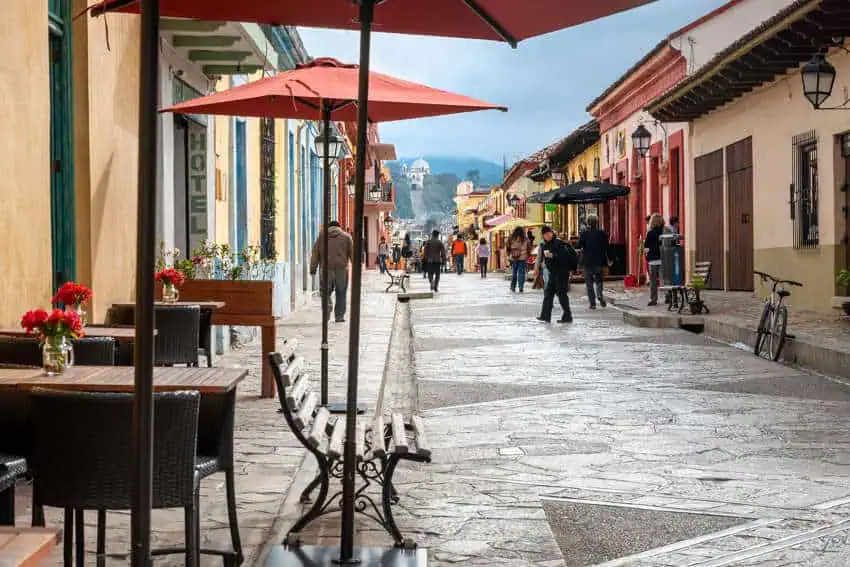
Perched in the misty Chiapas highlands, San Cristóbal de las Casas is a cultural crossroads with a magnetic pull. It’s a popular stop-off point for budget-conscious solo travelers making their way to Guatemala by land – but with its bohemian atmosphere, proximity to pristine nature, and Indigenous villages, this mountain town deserves to be a destination on its own.
On my first solo trip here, I’d planned to stay just a few days but ended up lingering for two weeks, utterly captivated by the ingenuity of locals and the region’s natural wealth.
The city’s walkable, cobblestone streets are lined with amber workshops, cozy cafés perfect for lingering with a book and bustling artisan markets. The air is often filled with the scent of locally-grown coffee and the sound of marimbas drifting from a sun-drenched plaza. Indigenous Tzotzil and Tzeltal Mayas, dressed in beautiful traditional wear, stroll the streets, often selling handmade textiles and other handicrafts.
San Cristóbal is a launchpad to the natural wonders of Chiapas: The spectacular Sumidero Canyon is just a 1.5-hour drive away; the thundering cascades and turquoise natural pools of Cascada El Chiflón are around three hours away by car; and the alpine lakes of Lagos de Montebello are four hours away. As it’s a popular nexus point for backpackers, the sheer number of hostels, coliving spaces, affordable Spanish schools, and volunteer opportunities creates a dynamic social ecosystem perfect for solo travelers.
What’s right for each type of traveler?
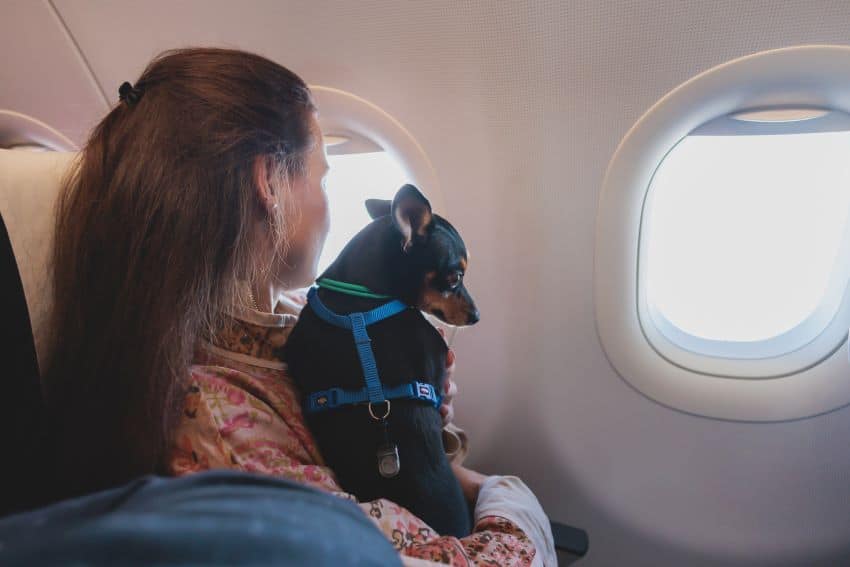
We’ve put together a table summarizing which destination would suit travelers based on their experience in Mexico.
Beginner travelers are those with limited international experience; maybe this is their first trip to Mexico. Ideal for first-timers who prefer margaritas with training wheels. These travelers stick to well-trodden paths, mastering “¿Dónde está el baño?” while clutching a phrasebook. They thrive in destinations where guacamole arrives with optional spice and the hotel staff speak Google Translate.
Intermediate travelers are those with some international experience who can handle moderate language barriers and cultural differences. Ready to trade resorts for real-deal experiences, these travelers navigate cobblestone streets without face-planting. They’ve graduated to ordering “tres tacos al pastor” without pointing and can haggle for a sombrero in Oaxaca’s markets… but still overpay by 20%.
Advanced travelers are those with extensive experience navigating complex destinations independently. These wanderers treat Mexico like a choose-your-own-adventure novel written in Spanglish. They’ve adopted a street dog named Churro, debate the merits of different artisanal mezcals and know which mercado stall has the best tamales oaxaqueños.
![]()
Nellie Huang is a professional travel writer and author based in San Miguel de Allende with her family. She has contributed to BBC Travel, CNN, International Business Times, and National Geographic, and co-authored Lonely Planet’s 2025 Mexico guide. Read about her adventures worldwide on wildjunket.com and follow her updates on Instagram @wildjunket.
